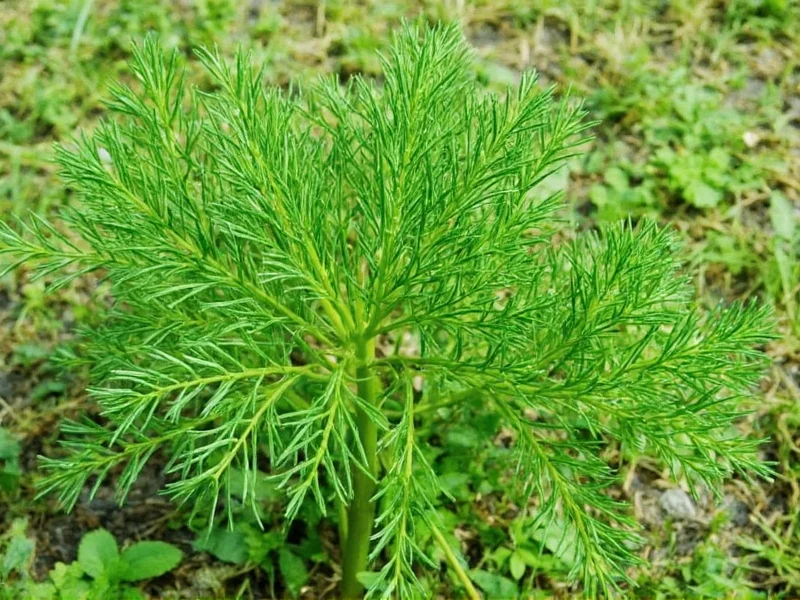Dill weed isn't actually a weed at all—it's a culinary herb with a long history of use in kitchens worldwide. Many people confuse dill weed with dill seed, but they're different parts of the same plant with distinct flavors and culinary applications. Understanding what is dill weed helps home cooks and professional chefs alike elevate their dishes with this versatile herb.
What Exactly Is Dill Weed?
Dill weed specifically refers to the feathery green leaves of the dill plant. The term "weed" in this context is misleading—it's simply the historical name for the herb portion of the plant, while "dill seed" refers to the plant's mature seeds. Botanically known as Anethum graveolens, dill is part of the celery family (Apiaceae) and grows as an annual herb.
Fresh dill weed has a bright green color and delicate, thread-like leaves that resemble fennel. When dried, it loses some vibrancy but retains much of its distinctive flavor. The fresh variety offers a more pronounced taste compared to its dried counterpart, which is why many chefs prefer using fresh dill when available.
| Characteristic | Fresh Dill Weed | Dried Dill Weed |
|---|---|---|
| Flavor Intensity | Bright, grassy, delicate | Milder, more concentrated |
| Best Used In | Finishing dishes, salads, sauces | Cooking, pickling, baked goods |
| Substitution Ratio | 1 part fresh = 1 part fresh | 1 part fresh = ¼ part dried |
| Storage Life | 1-2 weeks refrigerated | 6-12 months in airtight container |
Dill Weed vs. Dill Seed: Understanding the Difference
One of the most common points of confusion is the difference between dill weed and dill seed. While both come from the same plant, they're harvested at different stages and have distinct flavor profiles:
- Dill weed = The fresh or dried leaves of the plant, harvested before flowering
- Dill seed = The mature seeds that develop after the plant flowers
Dill seed has a stronger, more pungent flavor with pronounced caraway-like notes, making it better suited for pickling and breads. Dill weed offers a more delicate, grassy flavor that works well with fish, eggs, and creamy sauces. When a recipe calls for dill weed, substituting dill seed will significantly alter the dish's flavor profile.
Culinary Uses of Dill Weed
Understanding what is dill weed used for in cooking reveals its versatility across various cuisines. Scandinavian, Eastern European, and Mediterranean cooking traditions feature dill prominently. Here are the most common applications:
Fish and Seafood Dishes
Dill weed's bright flavor complements fish exceptionally well. It's traditionally used in gravlax (cured salmon), fish sauces, and as a garnish for grilled or baked fish. The herb's natural compounds help cut through the richness of oily fish like salmon.
Salads and Dressings
Fresh dill weed adds vibrancy to green salads, potato salads, and cucumber salads. When making dressings, add it at the end of preparation to preserve its delicate flavor. The combination of dill, sour cream, and lemon creates a classic sauce for many dishes.
Pickling and Preserving
While dill seed is more common in traditional pickling recipes, fresh dill weed adds beautiful visual appeal and a more subtle flavor to quick pickles and refrigerator pickles. Many modern pickling recipes incorporate both for layered flavor.
How to Substitute Dill Weed
When you're wondering what is dill weed substitute options, several herbs can work depending on the dish:
- Fennel fronds – Closest match in flavor, especially for fish dishes
- Tarragon – Similar anise notes but more pronounced; use half the amount
- Parsley with a touch of dill seed – For when you need the visual element
- Chervil – More delicate; good for sauces and salads
Remember that no substitute perfectly replicates dill weed's unique flavor, so adjust quantities based on your taste preferences. When substituting dried dill for fresh, use one-third the amount since dried herbs are more concentrated.
Storing Dill Weed Properly
Proper storage extends the life of fresh dill weed significantly. Treat it like delicate flowers:
- Trim the stems and place in a glass with an inch of water
- Cover loosely with a plastic bag
- Store in the refrigerator for 1-2 weeks
- Change water every few days
For longer storage, freeze dill weed by chopping it and placing in ice cube trays with water or olive oil. You can also dry dill weed by hanging small bunches upside down in a dark, well-ventilated space, though it loses much of its vibrant flavor when dried.
Nutritional Benefits of Dill Weed
Beyond its culinary uses, dill weed offers several health benefits. It contains vitamin A, vitamin C, and trace minerals like manganese and iron. The herb also contains flavonoids and monoterpenes that may have antioxidant properties. While you typically consume dill weed in small quantities, it contributes to overall dietary diversity.
Growing Your Own Dill Weed
For those interested in fresh dill weed at their fingertips, growing dill is relatively straightforward. The plant prefers full sun and well-draining soil. Sow seeds directly in the garden after the last frost, as dill doesn't transplant well due to its taproot. Harvest leaves when the plant is about 8 inches tall, taking outer stems first to encourage bushier growth.
Dill attracts beneficial insects like ladybugs and butterflies to your garden. If you want to collect seeds, allow some plants to flower and set seed. Note that dill can self-seed prolifically, so you may find new plants appearing in subsequent seasons.











 浙公网安备
33010002000092号
浙公网安备
33010002000092号 浙B2-20120091-4
浙B2-20120091-4